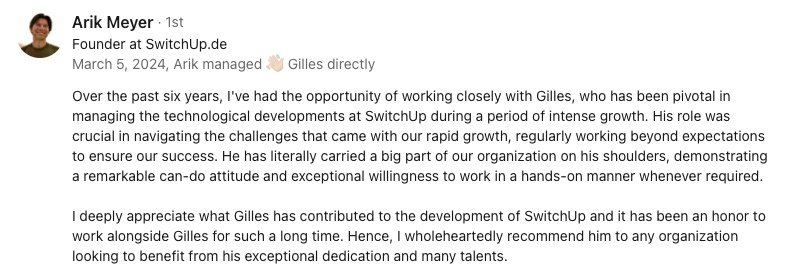Abstract:
The article highlights the transformative role of predictive analytics in understanding and influencing customer behavior to boost engagement and loyalty. By analyzing large datasets, predictive analytics help companies, from large corporations like Vodafone and Zara to startups like Zalando and BlaBlaCar, identify customer preferences and predict future actions. This allows for the creation of personalized experiences that not only improve customer satisfaction but also enhance retention and business performance. Real-world examples illustrate how companies use predictive analytics to tailor services, anticipate customer needs, and reduce churn by identifying at-risk customers. The integration of AI technologies, like natural language processing (NLP), further enhances personalization and communication strategies. The article also underscores the importance of ethical considerations and GDPR compliance in deploying predictive models, ensuring transparency and fairness. Overall, predictive analytics provide strategic advantages by enabling businesses to compete effectively, offering tailored experiences, and capturing niche markets through data-driven insights.
Navigating customer behavior can feel challenging. Businesses keen on boosting engagement and loyalty need to understand what makes their customers act. Predictive analytics simplifies this task by turning data into useful insights, helping companies anticipate what customers might want next. It's not just about better services; it's about creating experiences that keep customers coming back. Whether you're a big company or a startup, predicting customer needs can redefine success. Let's see how predictive analytics helps companies connect with customers more effectively.
Understanding customer behavior
Predicting and understanding how customers behave is crucial for businesses aiming to improve engagement and keep their clients. Predictive analytics helps analyze tons of customer data to spot patterns. This allows businesses to forecast actions and make informed decisions that meet customer needs. By using predictive analytics, companies can create detailed customer profiles to anticipate preferences, improving service quality and marketing strategies. This leads to a competitive edge.
Startups, in particular, face unique challenges such as limited resources and scalability. Predictive analytics can help them optimize their efforts, ensuring they allocate resources efficiently and scale operations effectively.
Analyzing customer interactions
Predictive analytics changes how businesses look at customer interactions. By examining large datasets, these tools can spot subtle behavior patterns that might be missed. This helps companies predict future actions and make better decisions to satisfy customers. With predictive analytics, businesses can create thorough customer profiles to tailor their services better. Case studies show this approach not only boosts satisfaction but also retention rates and business performance.
Collecting data from various points improves predictive accuracy. By integrating data from places like social media, customer service, and purchase history, companies can build richer profiles. This holistic view helps predict future behavior more accurately. Companies like Vodafone and Zara use this integration to offer personalized experiences. By analyzing interactions, they tailor communication to meet expectations, showing the benefits of predictive analytics.
Real-world examples from Vodafone and Zara show predictive analytics' power in customer engagement. Vodafone personalizes interactions to enhance service, leading to better satisfaction and retention. Zara uses sentiment analysis to understand and anticipate customer feelings. Adjusting communication strategies ensures customers feel valued, highlighting predictive analytics' role in maintaining engagement and loyalty.
Identifying at-risk customers
Predictive models are essential for spotting at-risk customers, allowing businesses to implement retention strategies. By analyzing past data and trends, these models can detect patterns indicating potential churn. Early identification is crucial for maintaining a loyal customer base. Once identified, at-risk customers can receive tailored offers or enhanced support to re-engage them, reducing churn and strengthening relationships.
Startups often use models like logistic regression and decision trees to predict churn. These models categorize the likelihood of a customer leaving, providing information for proactive measures. Implementing these models lets companies segment their customer base and apply specific retention strategies, increasing satisfaction. Their simplicity makes them accessible for businesses of all sizes.
Orange's proactive engagement strategy is a great example. By identifying at-risk customers, Orange engages them before they consider switching. This involves analyzing communication channels for dissatisfaction signs and addressing them promptly, reducing churn and proving predictive analytics' effectiveness in loyalty maintenance.
Customizing customer experiences
Anticipating and tailoring customer needs
Predictive analytics is crucial in creating personalized experiences by anticipating customer needs. Companies like Vodafone and Lufthansa use it to foresee what customers want, providing services and suggestions that align with their desires. This approach creates loyalty and a sense of being understood.
Startups like Zalando and BlaBlaCar show how personalization boosts engagement. Zalando uses AI to tailor shopping experiences, increasing conversion rates. BlaBlaCar personalizes ride-sharing suggestions, building lasting relationships. This personal touch enhances interactions and fosters long-term loyalty.
Personalized experiences go beyond satisfaction; they build a connection between the customer and brand. AI-driven recommendation engines anticipate and fulfill latent needs, making interactions seamless and relevant. This relevance keeps customers returning, boosting engagement and securing loyalty.
Case studies in European startups
Innovative personalization strategies
Startups like Soundtrack Your Brand and Antavo use predictive analytics in unique ways. Soundtrack Your Brand curates playlists to match customer moods, enhancing engagement. Antavo personalizes rewards based on buying patterns, strengthening retention by making customers feel understood.
Impact on customer retention
Personalized marketing campaigns driven by predictive analytics enhance retention. Tailoring messages to fit individual profiles speaks directly to needs, increasing retention likelihood. Zalando and BlaBlaCar's strategies show how personalization decreases churn rates, making customers feel connected.
Strategic advantages of data-driven personalization
Data-driven personalization offers significant advantages. By using predictive analytics, startups optimize offerings to meet customer needs, gaining a competitive edge. This approach enhances satisfaction, loyalty, and operational efficiency, as seen with Zalando's revenue increase.
Optimizing operational efficiency in customer retention
Streamlining resource allocation
Startups use predictive analytics to streamline resources, especially in support and marketing. Forecasting demand helps allocate resources efficiently, improving satisfaction and reducing costs. McKinsey notes predictive models anticipate demand, allowing dynamic adjustments.
Predictive insights refine targeted marketing, improving ROI and reducing churn. Identifying high-value segments tailors campaigns, leading to meaningful connections and higher engagement rates.
Reducing churn and increasing lifetime value
Predictive analytics reduces churn through proactive engagement. By identifying at-risk customers, businesses engage them with personalized solutions, reducing churn and increasing lifetime value. Personalized strategies boost loyalty and satisfaction, enhancing customer lifetime value.
Examples from Zalando and Revolut show predictive analytics' impact on retention and lifetime value. Zalando reduces churn by 25%, while Revolut improves retention with analytics-based strategies.
Integration with other AI technologies
Enhancing personalization with AI
AI refines personalization when combined with predictive analytics. Zalando uses AI-driven recommendations to personalize shopping, boosting engagement. Advanced models like GBM and XGBoost help understand data patterns, optimizing inventory and strategies.
Successful AI integration sets startups apart, offering tailored experiences. Companies like ContentWise and BlaBlaCar use AI to personalize content and ride-sharing, providing a unique edge.
Improving communication with NLP
NLP and predictive analytics transform sentiment understanding and communication strategies. Vodafone uses this integration to enhance service, improving satisfaction. Zara uses sentiment analysis to gauge moods, adapting strategies to meet expectations.
Predictive analytics guides chatbots, ensuring responses meet expectations. ING uses analytics-driven chatbots to address inquiries, enhancing experiences.
Navigating GDPR compliance in predictive analytics
Aligning with data privacy regulations
GDPR compliance is crucial for startups using predictive analytics. It requires transparency, consent, and data minimization. Startups must innovate in technology and data handling to comply, treating legal compliance as foundational. This also includes navigating challenges like retaining talent and aligning with EU-specific compliance requirements.
Strategies for transparency and data minimization
Transparency and data minimization are key to GDPR compliance. Effective consent management and data minimization techniques help align with GDPR, enhancing user trust.
Real-world examples of GDPR success
Some startups collaborate with ethical AI organizations to ensure compliance. Transparent data policies and ethical practices foster trust and offer a competitive advantage.
Ensuring ethical use of predictive models
Ethical considerations in customer engagement
Ethics are crucial in predictive model deployment. Models must avoid bias and ensure fairness, maintaining trust and engagement. Rigorous testing and validation detect and mitigate biases.
The role of internal review boards
Internal review boards uphold ethical standards. They review projects to align with guidelines and identify biases, promoting fairness. Zalando uses these practices for ethical deployment.
Case studies of ethical analytics deployment
Startups integrating ethical frameworks gain strategic advantages. Collaborating with ethical organizations and conducting audits enhance performance and customer satisfaction.
Gaining a competitive advantage
Differentiating with data-driven insights
Predictive analytics helps startups stand out by tailoring experiences that resonate. Personalization enhances acquisition and retention. Companies like Zalando personalize shopping, boosting satisfaction and conversion rates.
Startups can keep attention by understanding and predicting behaviors, tailoring marketing efforts effectively. This foresight ensures customers feel valued, driving loyalty.
Competing with global players
Predictive analytics helps startups compete with global giants. It lets them target niche markets with precision, delivering personalized services. This approach positions startups as agile and innovative.
Predictive analytics opens innovation doors, enabling startups to capture niche markets. BlaBlaCar uses analytics to refine algorithms, expanding its footprint.
Success stories show predictive analytics' potential for global competition. Revolut uses predictive models for risk management, offering competitive services globally.














